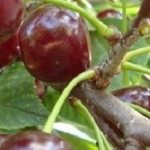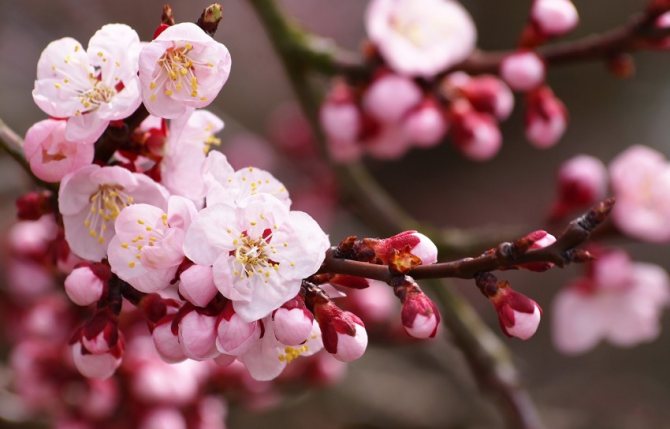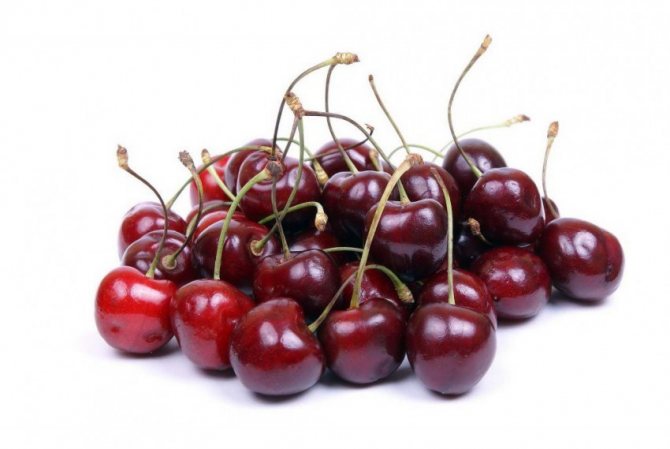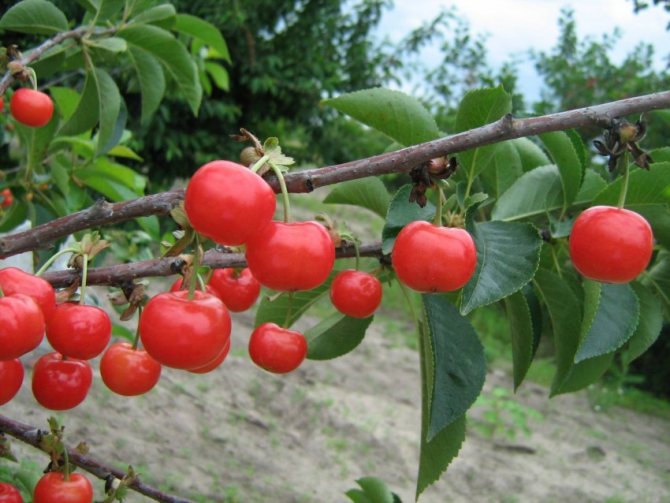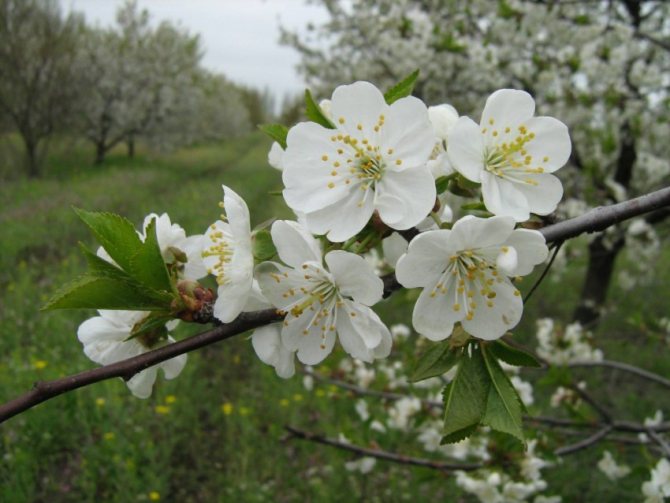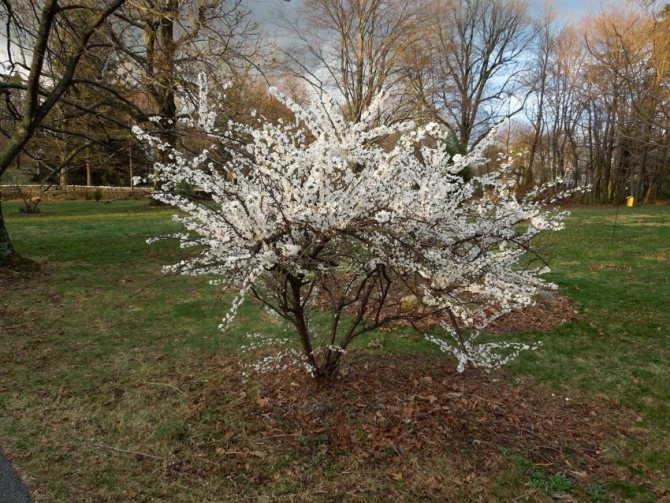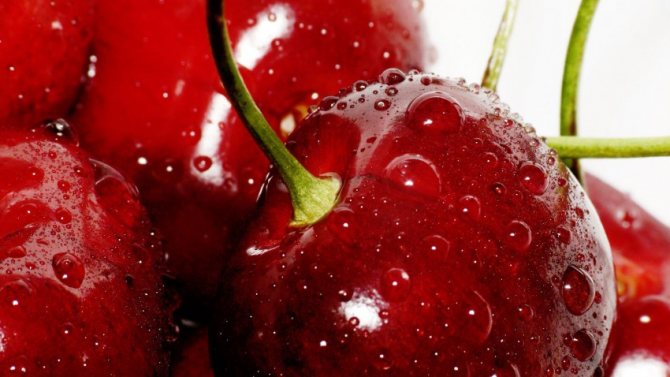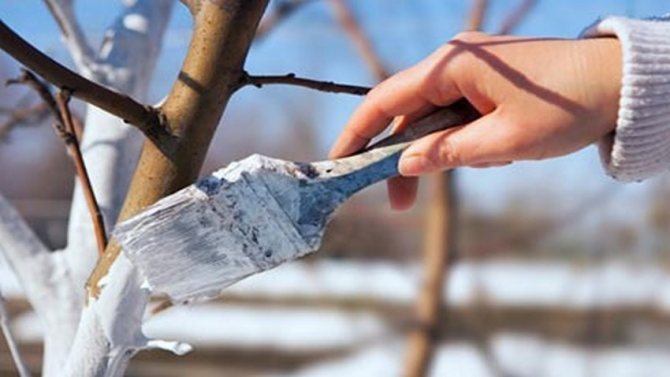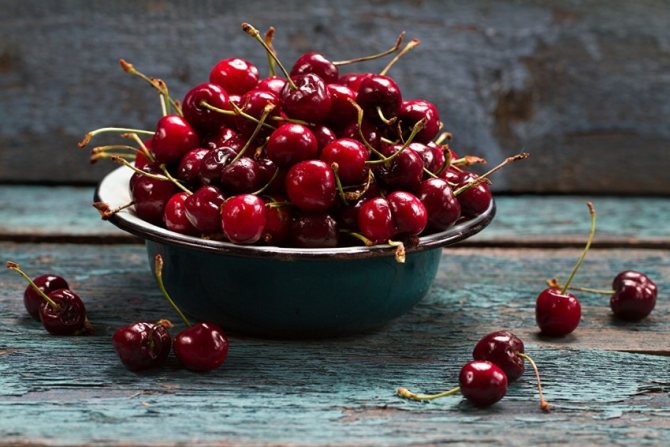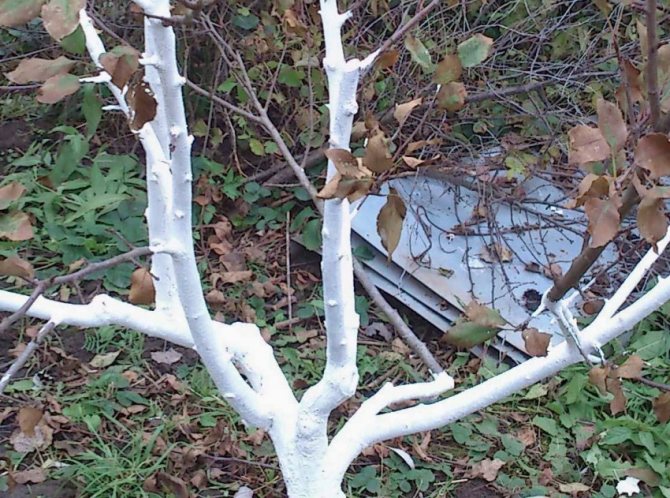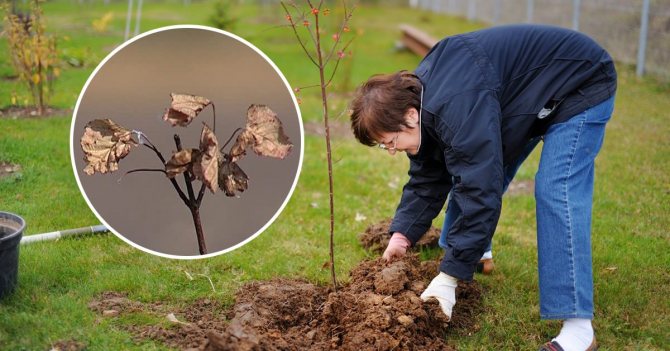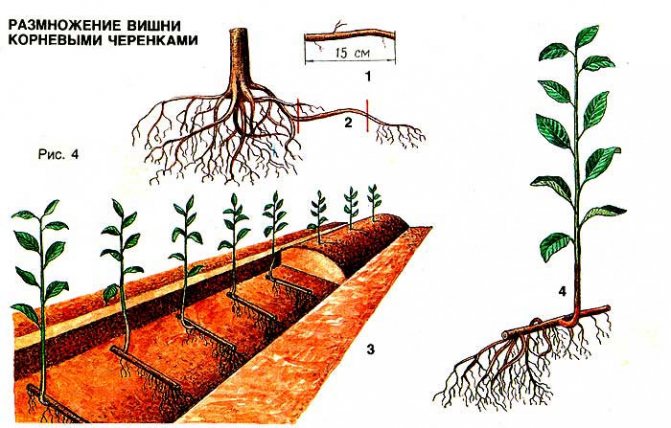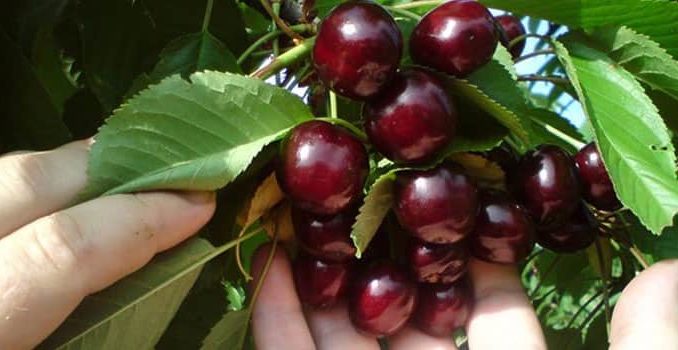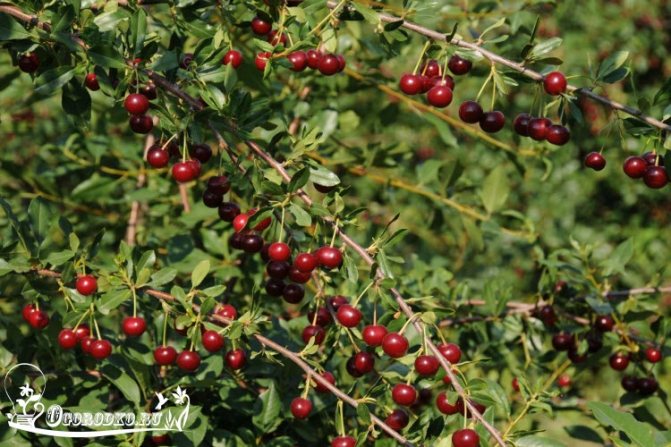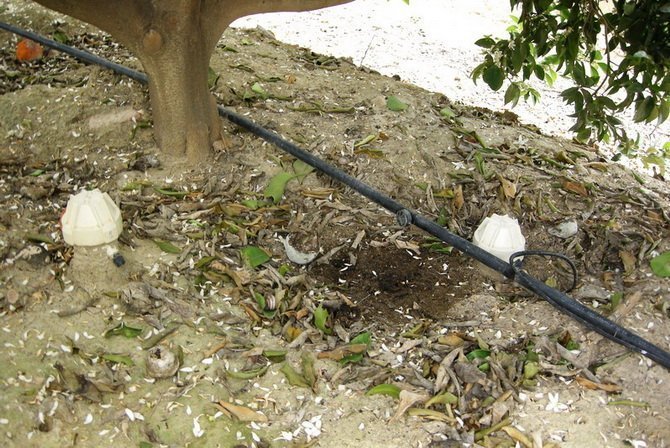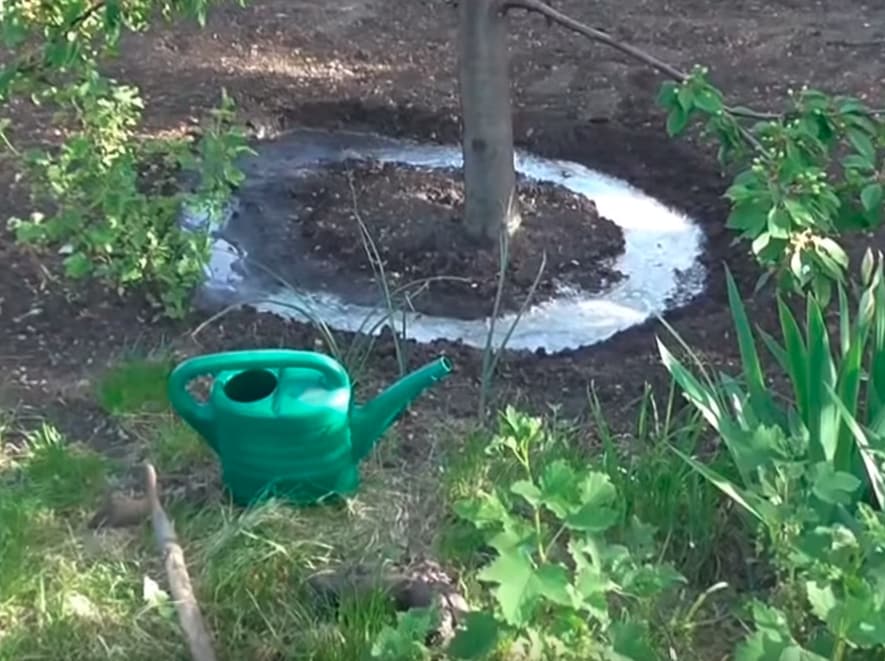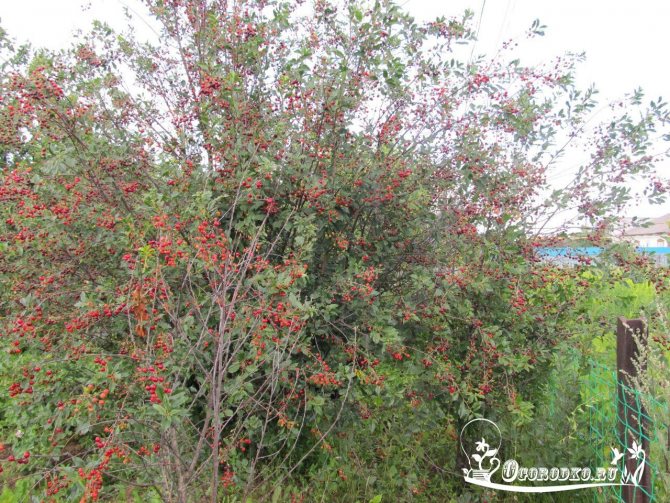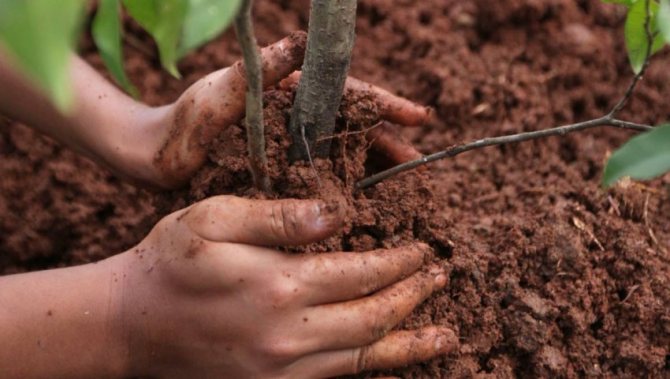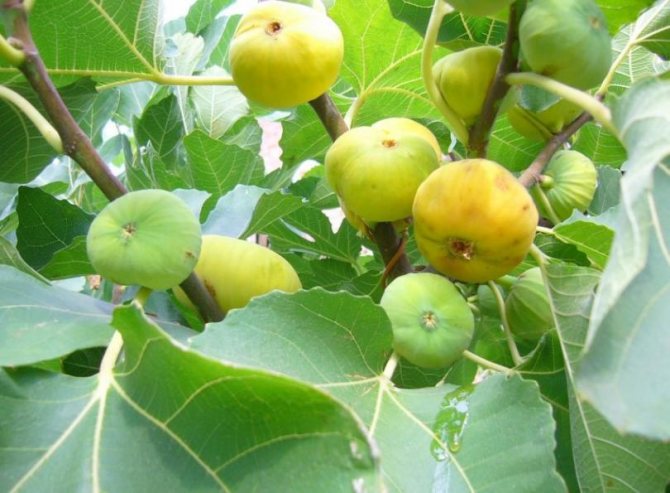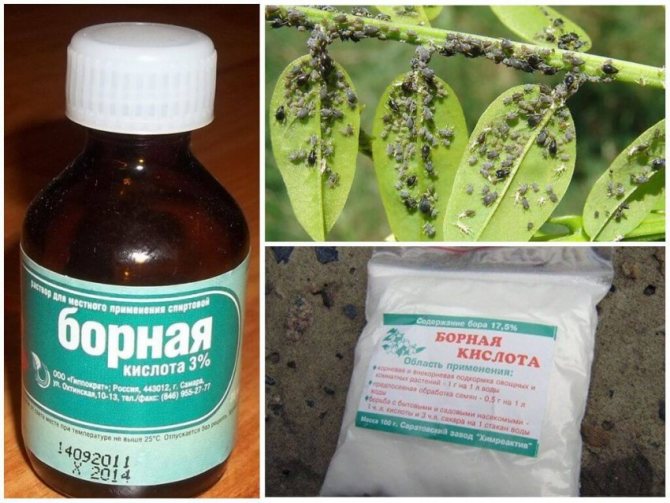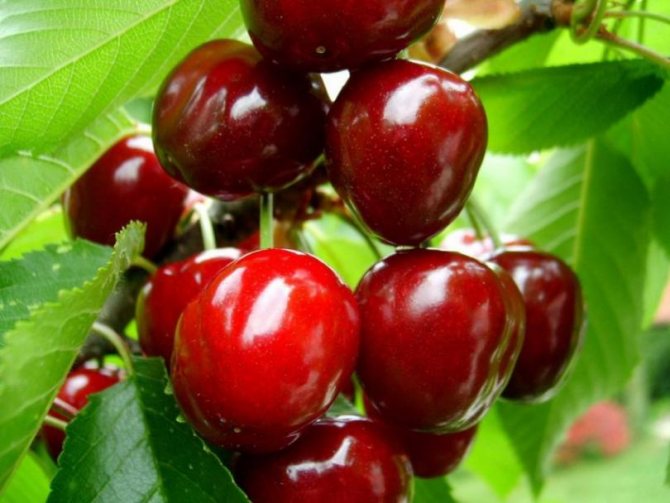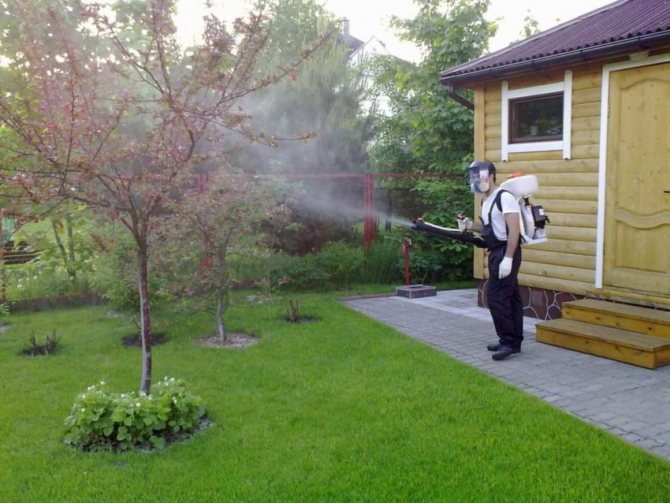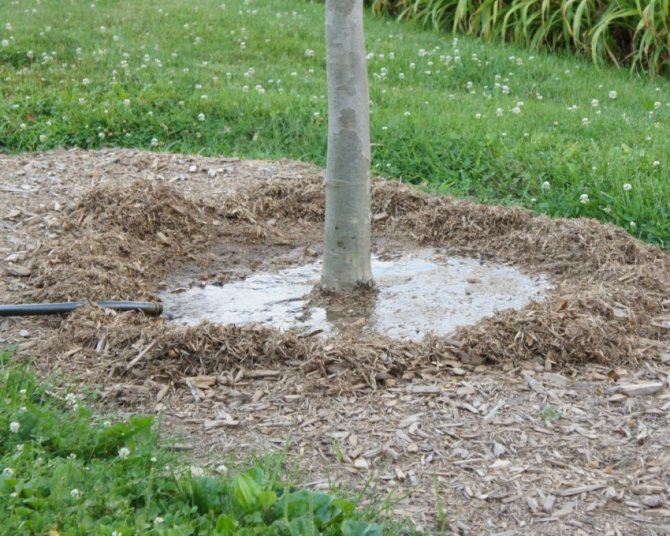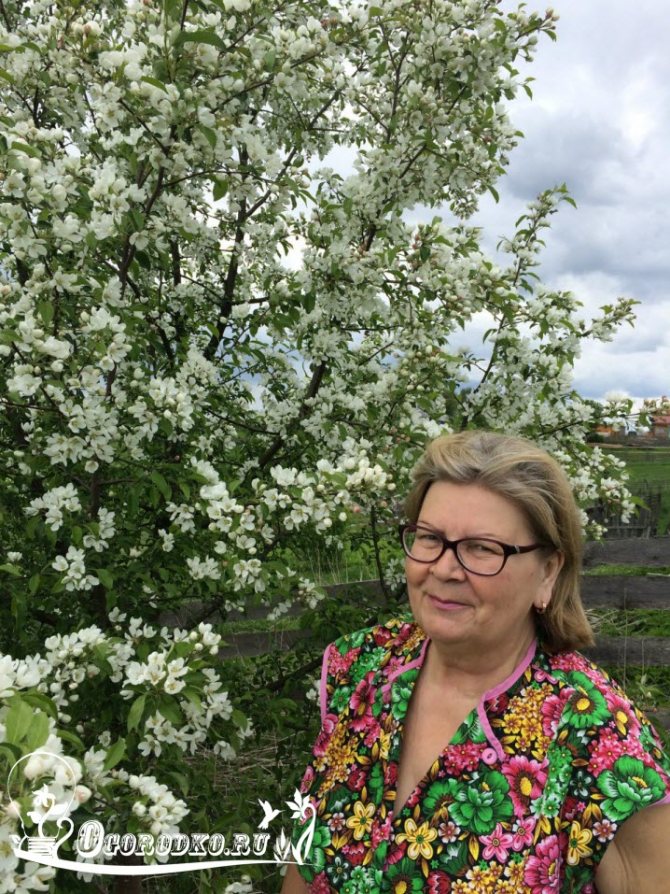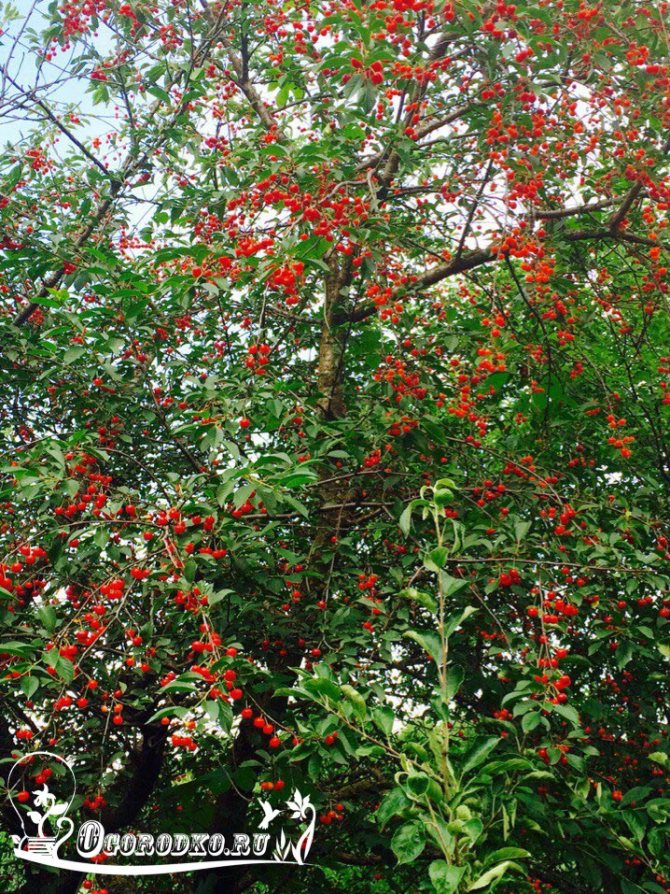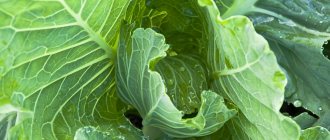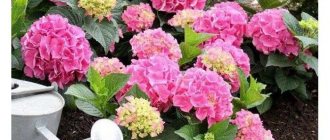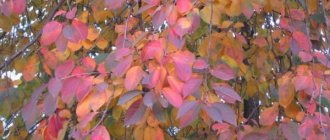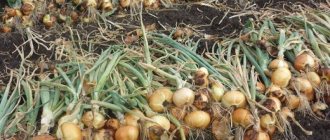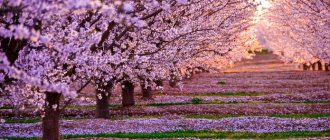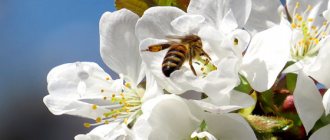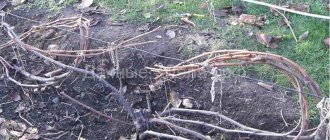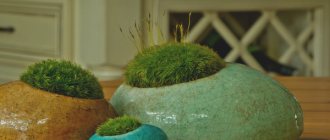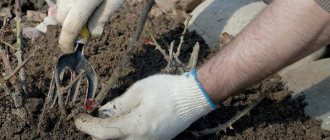For a widespread crop like cherry, planting and grooming are essential. An ordinary cherry growing by itself, if it does bear fruit, is much worse than those trees that were planted in a suitable place and surrounded by constant care.
Cherry in the suburbs
Owners of summer cottages near Moscow, when deciding on planting a cherry tree, should pay attention to varieties adapted to the existing climatic features. This refers to increased frost resistance in winter and drought resistance in summer. Cherry, whatever the variety it belongs to, has strong chances for growth and fruiting in various parts of our country, but if we talk about the volume and quality of fruiting, of course, the purchase of a seedling must be taken seriously. In the suburbs, today such varieties are popular as:
- Revival,
- Toy,
- Crystal,
- Turgenevka,
- Memory of Yenikeev,
- Rastorguevskaya.
All of these varieties have strong immunity to common diseases of trees belonging to the pink family, and also perfectly correlate with the climatic conditions of the Moscow region.
Fertilizers and watering cherries
If the growth is weak, then in the fall it is necessary to add superphosphate. It is necessary to periodically loosen the soil, remove weeds and water the trees. At the beginning of fruiting, another care is required. Increase the number and volume of watering. In the summer - 3-4 buckets, but at the beginning of autumn, moisture-charging irrigation is carried out (5-6 buckets). With an abundance of rains, you do not need to water, you just need to make fertilizing with potassium and phosphorus.
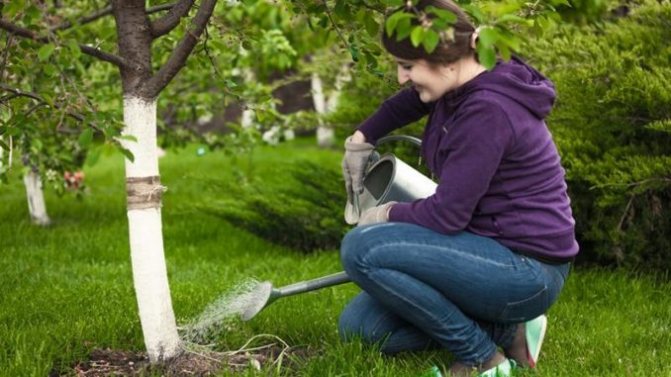
There are some questions about the correctness of feeding adult trees in the spring season. First, minerals are added before flowering - urea is embedded dry into the soil around the trunk. This will increase the flowering activity. Nitrogen is added during the flowering period. Mullein or chicken droppings work well. A week later, it is sprayed with urea, and after two weeks, repeat. Foliar feeding will help preserve the ovaries.
The choice of planting material
An ordinary growth around an old neighbor's tree can serve as a planting material for cherries. Or an unknown rooted sapling from a nearby market or village fair. However, if the goal of the summer resident is the quantity and quality of the berries obtained, then you should definitely contact a specialized nursery, where you can purchase a good-quality seedling. When buying, you should pay attention to some details. First of all, as experience shows, one-year-old seedlings show the best results in settling down to a new place. Their external qualities are not yet as impressive as those of two-year-olds, however, the root system is already ready to be transplanted to the new owner's site, and without causing the impressive damage typical of transplanting older seedlings.
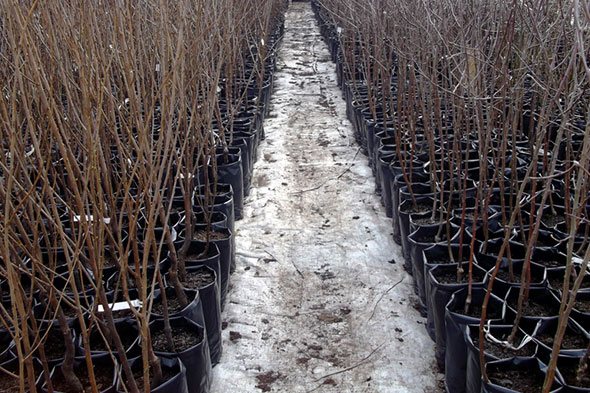

Also, when choosing a seedling, you should pay attention to the condition of the shoots. It can be checked by slightly bending it. Shoots should be flexible, not crackle when deformed, moisture should be felt to the touch. Dry shoots that break under mechanical stress can serve as a sign that the seedling is overdried and will not be able to take root when transplanted.
Array
Preparing for landing
You need to choose a sunny place for the future habitat of cherries. Cherry loves light and gratefully responds to illumination with large numerous fruits. Before planting in spring, it will not be superfluous to take care of the soil in the future habitat of your seedling. It is good if the soil at the summer cottage is sandy. If the soil is clay, add a bucket of sand to the ground.
Since cherries do not tolerate excessive moisture for the root system, this measure will support the plant by increasing the amount of oxygen supplied to the roots. It is useful to add organic fertilizers to the planting site, with the calculation of 10-15 kg per 1 sq. m. You can also turn to synthetic fertilizers, for example, to phosphorus and potash, with the calculation of 100 g per 1 sq. m. m. Before directly transferring the seedling to the prepared soil, you should hold its root system in water for about 2-3 hours.
Pruning cherries when planting. Young tree
Young cherries are pruned immediately after planting the tree. The purpose of pruning is to form the correct crown and promote root engraftment. The procedure for pruning a young seedling:
- Determined with the appointment of shoots. One vertical shoot will be the trunk, the rest will form the "skeleton" of the tree.
- It is required to leave 5-6 shoots growing in different directions - these will be skeletal branches. The distance between them is 10-12 cm.
- Shoots growing inside and at the wrong angle are cut off.
- Remove shoots that intersect and interfere with each other.
- Cut off the growth at the base of the trunk.
- Slices are covered with garden pitch.
To increase the productivity of the culture, the seedling is sequentially pruned, forming and thinning the crown, for 4-5 years.
Usually, cherries form a crown of a sparse-tiered type. This work begins from the 2nd year after planting. The pruning order is as follows:
- Second year: cut off shoots directed to the center, dry, diseased, etc .;
- cut branches that have grown between skeletal branches;
- shorten the side shoots so that they are 30 cm down from the top;
- the branches thickening the crown are removed to the ring - to the base.
- shoots that have grown by 60 cm and more are shortened by 9-10 cm;
- remove branches thickening the crown and looking inward;
By the fifth year, the tree should have about 15 frame branches. On both sides of the skeletal branches there are semi-skeletal branches.
Care
Caring for a planted seedling consists in loosening, in which a trench-shaped circle should be erected around the seedling. This simple recess greatly simplifies watering, since the water introduced into the soil moves purposefully to the root system of the tree. Watering, by the way, should be abundant, but not frequent - as the topsoil dries up. Excessive watering can have a detrimental effect on a fragile seedling.


Cold water is also unfavorable for the seedling, therefore, it is worth refusing to water with a hose in the first weeks. In order to water young fruit trees, it is worth taking a special container in which the water will settle and heat up to the daytime outside temperature. When a month has passed since planting the seedling, fertilizers can be applied to the trenches around the tree. As a rule, at this age, peat and humus are introduced from fertilizers. After laying the fertilizer in the trench, the plant is watered abundantly.
Other ways of breeding cherries
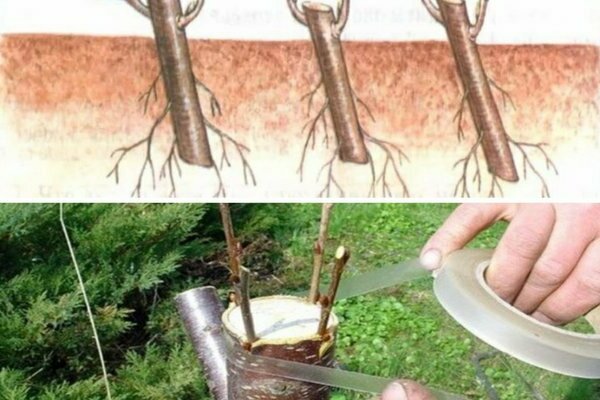

Another vegetative propagation method for cherries is propagation with root overgrowth... This method is only suitable for propagating trees that were not grown on rootstock.
This is done in the spring. For reproduction, it is advisable to take root shoots that grow as far as possible from the mother tree. Such processes will take root better in a new place. Also, if you start digging root shoots too close to the mother tree, you can harm its roots.
First you need to select suitable shoots, then at their base you need to carefully remove the ground and use a sharp knife to separate them from the root system of the mother tree. The place of the cut is coated with garden pitch, the roots are sprinkled with earth. Due to the presence of their own roots, such seedlings take root very quickly.
If you separate and plant them in the spring, by the fall they will already be full-fledged plants with their own root system.
Cherry seed propagation
Cherries can also be propagated by seed. When propagated by seeds, the properties of the mother plant may be lost. Before sowing, seeds must stratify... Low temperature treatment of seeds is called stratification. The seeds should be mixed with slightly damp sand and put in the refrigerator for 1-2 months.
Seeds are planted in April. Planting depth is 3-4 centimeters. Most often, cherries are grown from seeds in order to then use these seedlings as a rootstock.
In production nurseries, the popular method of propagating cherries by grafting. This method is much more effective than grafting. Plants develop and grow faster, grafting allows you to quickly increase the number of plants.
Reproduction by layering
A simple way is to propagate cherries by layering. Cherries are propagated by horizontal and vertical layers.
When propagating by horizontal layers, a branch is taken and bent to the ground. In this position, it is fixed with a special hairpin. The place of fixation is covered with earth and watered with water.
During reproduction by horizontal layers, the ground part of the bush is cut down. This should be done when the cherry is dormant. When the first shoots begin to appear, they will need to be hilled. This is done repeatedly, the height of the piled mound of earth should be within 15-20 centimeters. When the shoots are in the ground, they will start to take root. After a year, it will be possible to separate the shoot and plant it in a permanent place.
Diseases and pests
With the goal of a good cherry harvest, you should study some of the diseases that are characteristic of the cherry tree:
- cherry coccomycosis,
- cherry moniliosis,
- clotterosporium disease,
- anthracnose,
- cherry rust,
- scab.
All of these diseases are fungal. The carrier of fungal spores is foliage that has fallen since autumn, which must be removed from the territory of the summer cottage. The land around the trees must be digged in autumn. If the disease develops, the affected tree branches should be removed by treating the branch cut with garden varnish. The affected tree is sprayed with copper-containing preparations at two-week intervals.
In addition to diseases, pests are a threat to the future harvest:
- cherry aphid,
- slimy sawfly,
- cherry elephant,
- hawthorn,
- cherry moth.
To combat insect pests, there are many specialized chemicals that allow the summer resident to prevent their appearance and spread in time. For example, such popular drugs as Metaphos, Karbofos, Fufanol and many others.
How many years will a cherry from a stone bear fruit?
With proper care, pitted cherries will begin to bear fruit in 5-6 years. It is worth considering that the daughter plant may not match the characteristics of the mother plant if it has not been grafted.
It will be useful for novice gardeners to read about the peculiarities of grafting cherries in the spring.
It is quite possible to grow a fruiting cherry from a stone.The main thing is to approach the process of choosing planting material correctly and follow the cultivation techniques. It is also important to understand that this process will take much longer than cultivating a seedling purchased in a nursery, so be patient.
Harvesting
Fruiting for each cherry variety is different. It is impossible to determine the exact ripening time of a particular variety, since it directly depends on weather conditions, compliance with the rules for planting a tree, as well as on the care provided by the summer resident. Early varieties are pleased with the results by the beginning of July. Such varieties include the Miracle varieties - Cherry, Vavilovskaya, Memory of Vavilov. By August, late varieties ripen - Nefris, Meteor, Michurinskaya. Determine the degree of ripeness of the fruit by their taste. 10 days before the expected date of harvest, watering of the trees is stopped so that the berry itself is less watery and has the flavor characteristic of the variety.
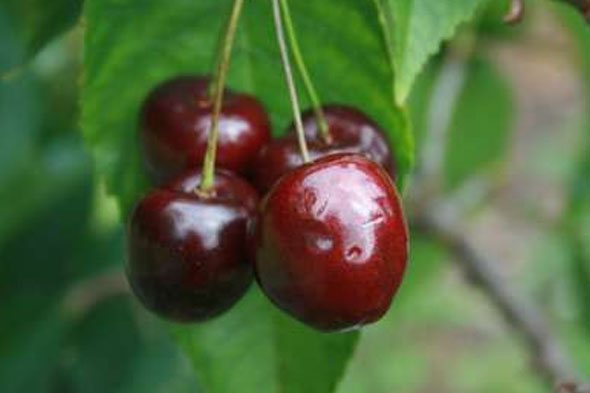

The first to be harvested are those trees that are located in the sunniest part of the cottage. It is better to start the collection process from the lower branches, gradually moving towards the top. You should be careful with cherry branches, since even an adult tree has a rather fragile structure. Therefore, it is not customary to pick cherries by climbing up the tree itself. It is much more expedient to collect with the help of a ladder attached to a tree. Berry picking should be done on a sunny day, after the morning dew has dried, so that the skin of the harvested berries is stronger and more elastic.
What does complete wood care include?
Cherry tree maintenance is easy, even for novice gardeners. The main activities that need to be carried out annually in the garden where cherries and cherries grow are regular and moderately abundant watering of trees, their pruning and protection from diseases and pests, as well as removing weeds and introducing nutrients into the soil.
To achieve good fertility indicators, you need to know about the intricacies of care that is required for old and young plants, as well as about which months it is better to carry out certain activities.
Watering
Cherry trees are especially in need of regular watering in the first years after planting in the country. It is believed that in one season the plant should be watered, on average, 12 times. In this case, one should focus on weather conditions and, depending on them, increase or decrease the frequency of irrigation.
After the calendar year has passed, the first watering should be done after the tree has bloomed, the second - at the time of pouring the berries.
The amount of moisture should be such that the soil is moistened to a depth of about 40 centimeters. Watering each tree requires about 3 to 6 buckets of water. To determine exactly how many times you need to water the plants, you will have to take into account the amount of natural precipitation.


In autumn, after the leaves fall off, winter watering is carried out, during which the soil is shed to a depth of 80 centimeters. Thanks to this moisture, the root system prepares for a successful wintering, and the soil does not freeze as quickly as dry.
Top dressing
To get a good harvest from a cherry tree, it must be fed regularly. Like other green dwellers in the garden, these plants need mineral and organic fertilizers.
Fertilization work begins in early spring, even before the flowers bloom on the tree. Urea or calcium nitrate is used as a top dressing. 60 grams of urea or 2 tablespoons of saltpeter are scattered over the entire surface of the trunk circle, then the soil is loosened. Such procedures are correct and favorable for growth and flowering.
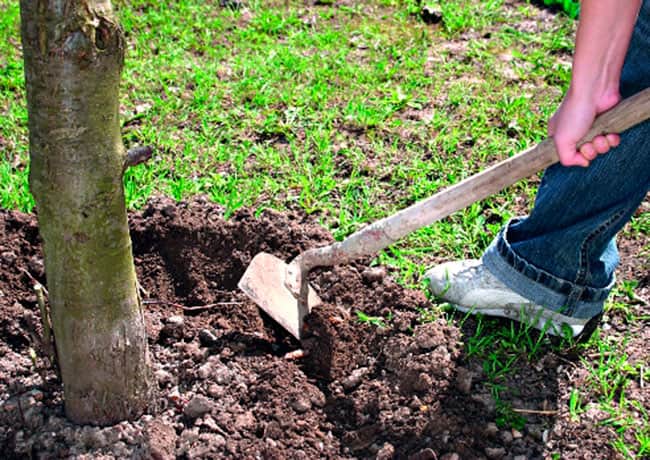

When flowers appear, it is time to apply nitrogen and organic fertilizers, for example, bird droppings or cow dung. After flowering, the cherries can be sprayed with urea. To do this, 40 grams are diluted in 10 liters of water.Spraying like this helps maintain ovaries and improves tree nutrition.
Pruning
Pruning helps to intensify the growth of the cherry. The first time this procedure is carried out after swollen buds appear on the tree. If you miss this moment, then it is better to cancel pruning altogether so as not to injure the plant. In the spring, first of all, the removal of frozen shoots is performed. After that, the slices should be processed.
See also
Description of decorative glandular cherries and rules of planting and care, reproductionRead
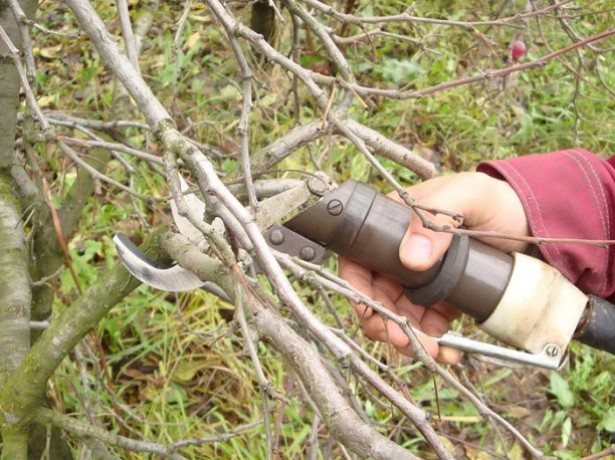

Shoots less than 40 centimeters long do not need pruning. To prevent the crown from being too dense, it is enough to eliminate competing branches, as well as get rid of the shoots directed vertically. Crown-shaping pruning can be done during the summer months after picking the berries.
Pest control
Cherries, like most other members of the Pink family, are susceptible to many diseases. Most often, the tree is affected by fungal and bacterial diseases. Therefore, care involves the regular use of insecticidal and fungicidal preparations.
The basic rules for the prevention of cherry diseases are:
- whitewashing of trunks in the spring;
- several treatments to protect against disease during the season;
- compliance with sanitary standards.


Mistakes of novice gardeners and what not to do with a tree
Anyone who believes that cherries can be planted in summer is deeply mistaken. There are other deadlines for this. You can not feed the fruit crop with nitrogen in the fall, which is often the case. The time for applying such fertilizers is summer, it is forbidden to do this in autumn.
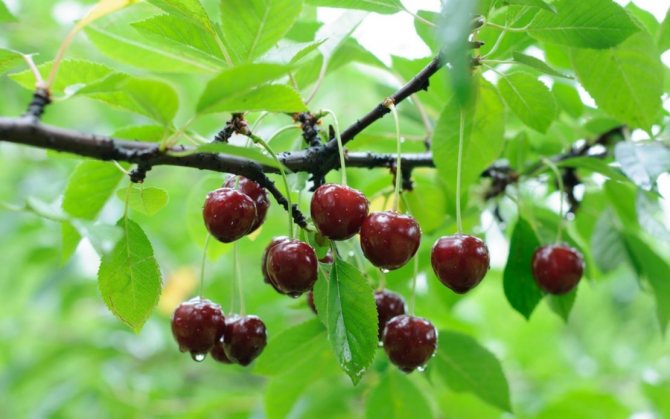

With regard to watering, the climate should be monitored. But there are those who do this in the summer during the rainy season - it is foolish to do so. Another part of gardeners is convinced that abundant moisture will give the berries the best pouring and watered abundantly at the time of their ripening. In this case, you can get the effect of a reverse reaction, and the fruit will crack.
The subject of controversy among garden lovers is cherry pruning. Newbies believe that cutting down the branches will reduce fruiting. Among experienced gardeners, there are also supporters not to touch the young tree, which, in their opinion, only weakens and "licks" the wounds.
This is actually a mistake. Pruning of all stone fruit crops begins at a young age, from the first year, and should be carried out regularly in accordance with all the rules of agricultural technology. If this is not done, the trees grow quickly, their crown thickens, respectively, the quality and quantity of berries decreases.
How to deal with diseases of a fruiting tree?
It is necessary to start preventive measures against stone fruit diseases in advance of fruiting. However, these events are held all year round at different times in their own way. In summer, cherries can catch coccomycosis, as a result of which the leaves are affected, they turn yellow and disappear already in June.
What tomato seedlings do not like: rules for the care and neighborhood of plants
They rid the tree of it with Bordeaux liquid, make a 1% solution and spray the crown. If necessary, repeat the action after three weeks. Experienced gardeners define the summer task as follows: to preserve the foliage so that the plant has the strength to overwinter.
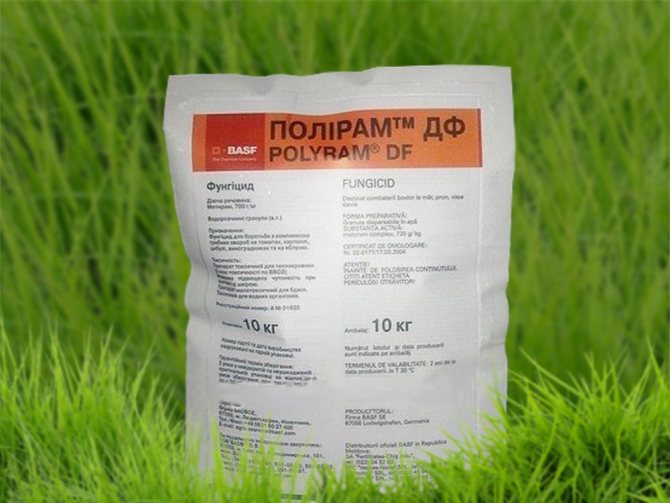

In summer, anthracnose develops in stone fruits, and cherries are no exception. Fungal disease of the cherry fruit leads to the destruction of the crop.
The strangeness is that the first signs go unnoticed, the berries cannot be saved, so then we are talking only about the treatment of the tree with the drug "Poliram" through spraying.

